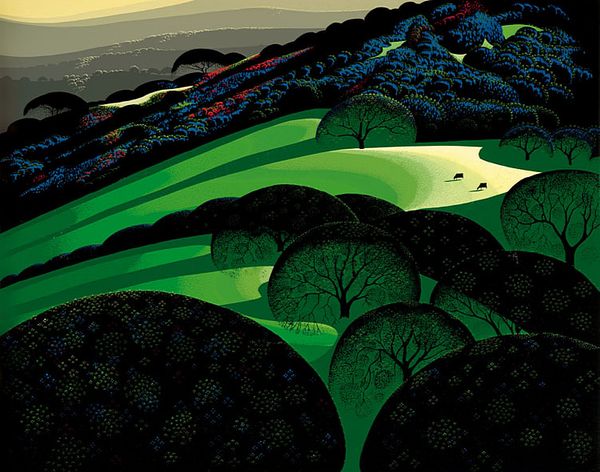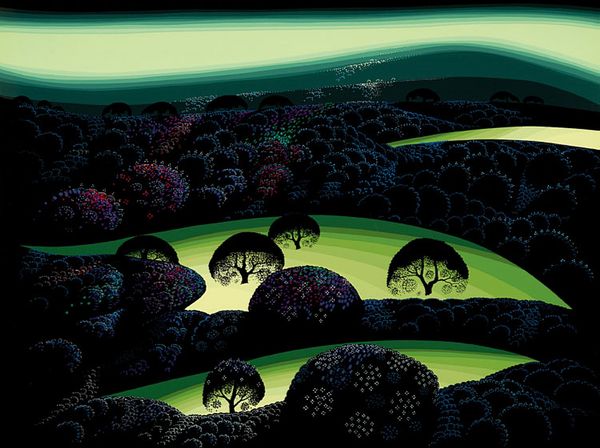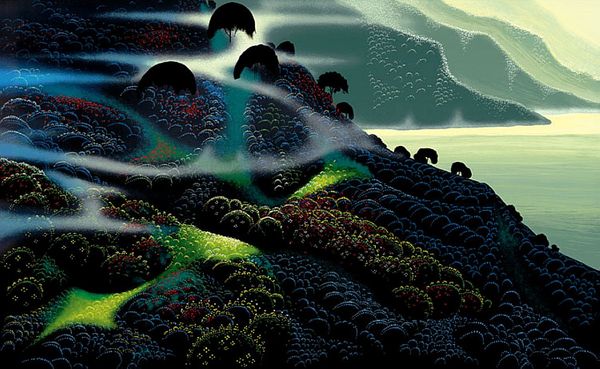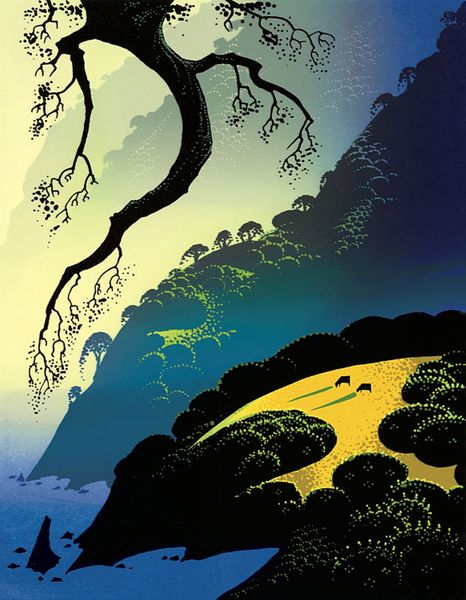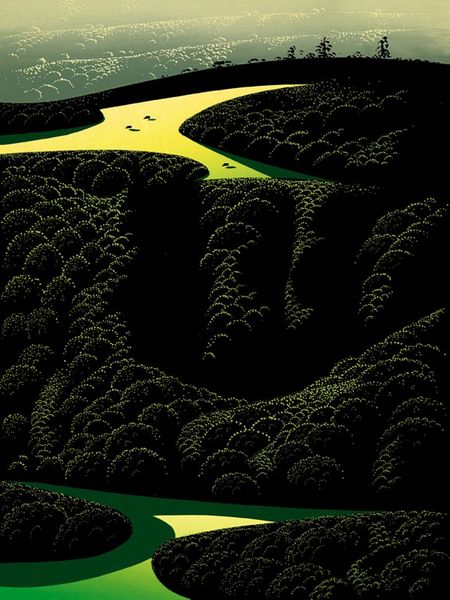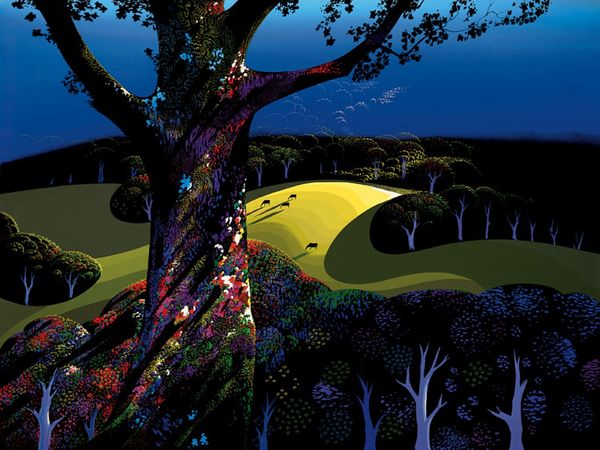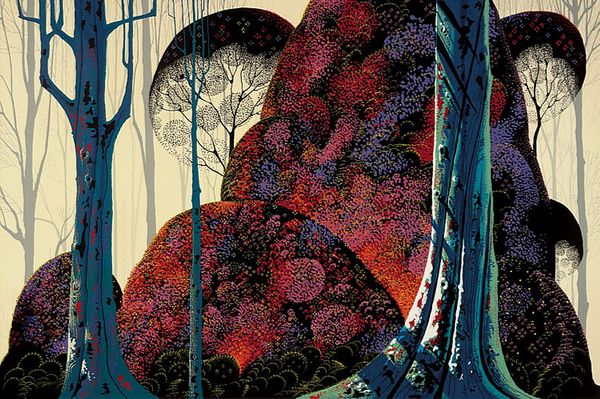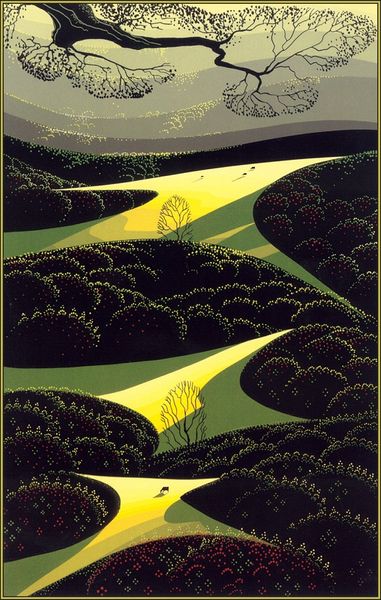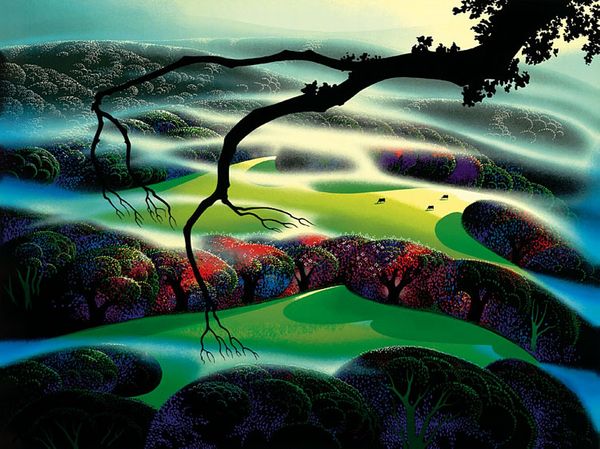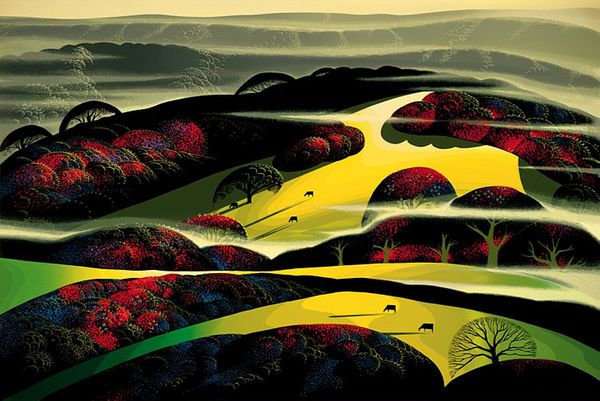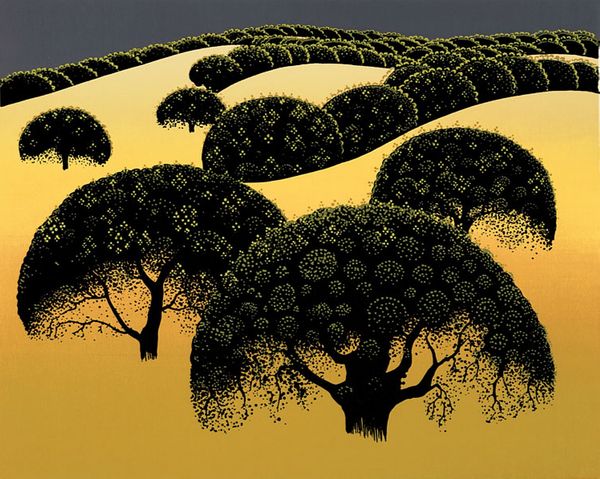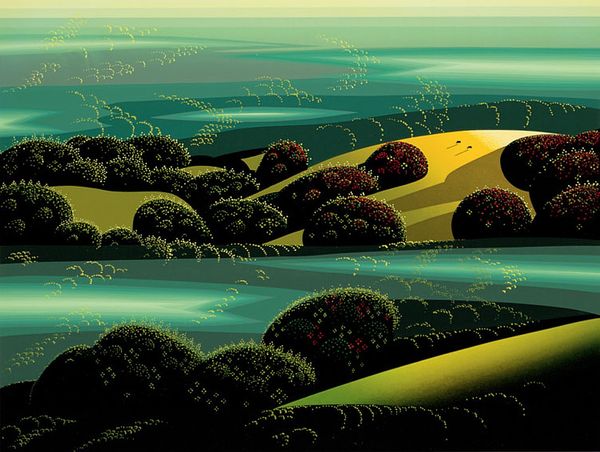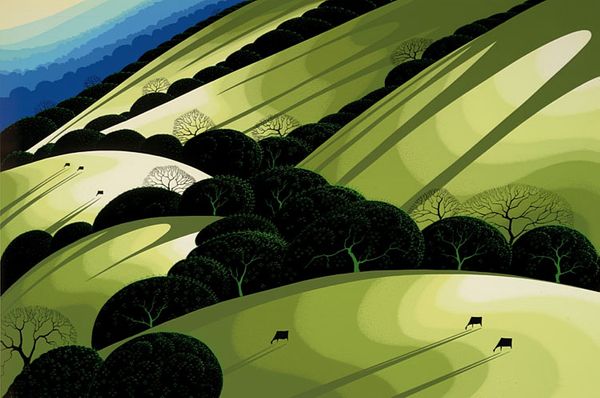
painting, acrylic-paint
#
contemporary
#
painting
#
landscape
#
acrylic-paint
#
geometric
Copyright: Eyvind Earle,Fair Use
Editor: Here we have Eyvind Earle’s "Little Jewels" from 1990, created with acrylic paint. It’s really striking how the dark, almost silhouetted, forms contrast with the bright, jewel-toned dabs of paint that create the landscape. What social forces might have been at play that led Earle to create this type of artwork in the 1990s? Curator: That's a perceptive observation. Earle was very much a product of his time. Consider that in the 1990s, the art world saw a resurgence of interest in representational painting alongside the continued dominance of abstract expressionism and pop art. Earle's landscapes, with their highly stylized and almost decorative qualities, stand in an interesting relationship to those movements. Can you see how his emphasis on idealized, almost fairytale-like, landscapes might resonate with or push back against prevailing artistic trends and anxieties? Editor: I see your point. While pop art engaged with commercialism and everyday life, Earle’s work seems to be a retreat into an idealized, almost fantasy-like space. Do you think there might have been an intentional critique of society within this "retreat"? Curator: Precisely. There is also the socio-political context to consider: the end of the Cold War, economic shifts, and burgeoning environmental consciousness all influenced artistic expression. How might a piece like “Little Jewels” with its careful orchestration of nature, act as a commentary on those things? Was it offering an escape or calling our attention to what was at stake environmentally? Editor: This makes me think about how different audiences at the time might have interpreted this work and how that might’ve played into his recognition as an artist. Curator: Indeed. By thinking about these contexts, we can more fully appreciate the historical significance of works like "Little Jewels" and its place in the ongoing dialogue between art and society. Editor: I definitely understand that now; this conversation helped a lot. Thanks!
Comments
No comments
Be the first to comment and join the conversation on the ultimate creative platform.
